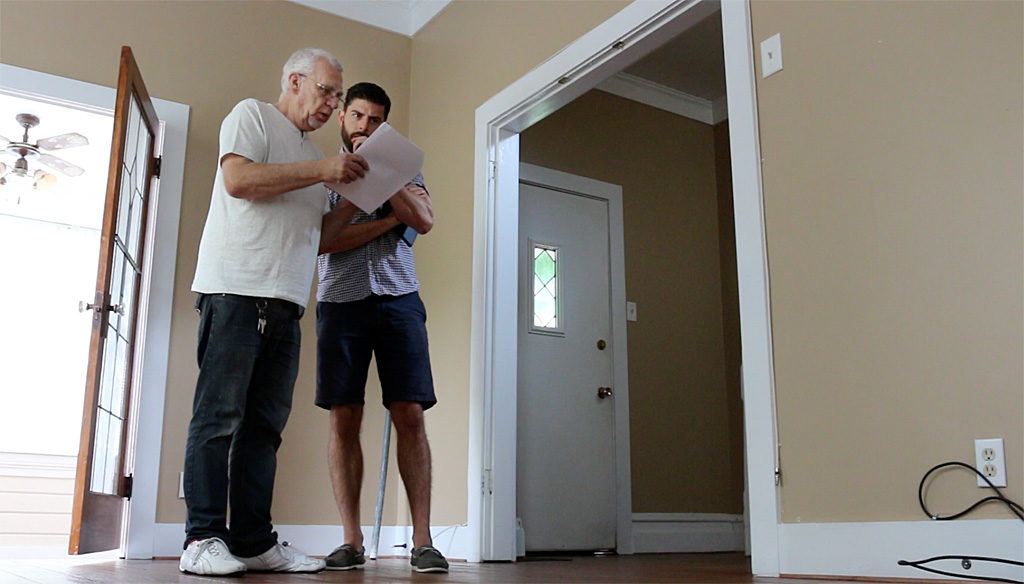Testing for asbestos and other hazardous materials is an important step when demolishing a home. It can also be required before extensive renovations.
Most municipalities require a detailed hazardous materials report be submitted when applying for a demolish permit.
In British Columbia, any manufactured article or other material that is suspected to contain more than .5 per cent asbestos must be tested.
In a home, those items could include drywall, linoleum and vinyl floor tiles, duct work, taping compounds, insulation and textured ceilings.
What is asbestos?
Asbestos is a natural lightweight fibrous silicate. It’s strong. It’s versatile. It can be woven easily into other materials. It resists chemical erosion. It’s heat resistant.
Those properties made it particularly popular as a building material from the 1950s into the 1980s. Although it can sometimes be found in older and newer construction.
Asbestos can be a hidden killer
Tiny, fine asbestos fibres can remain suspended in the air for hours. Inhaling asbestos fibres can cause severe health issues like lung cancer, scarring of the lungs and thickening of the lining of the lungs.
That doesn’t mean you have to panic if you have drywall in your home, a popcorn ceiling in your living room, or vinyl floor tiles in the downstairs bathroom. (Although the style police may want to have a word with you).
Left alone, asbestos is largely inert.
It’s only when it’s disturbed that dangerous asbestos fibres can be released into the air. And a demolition or renovation project is a whole lot of disruption.
How testing for asbestos is done

Testing for asbestos should be done by a reputable contractor that employs properly trained asbestos surveyors. They should have professional accreditation such as the Asbestos Hazard Emergency Response Act (AHERA) certificate. This certificate is required in the US. Many surveyors in BC have it as well.
AHERA certification means a surveyor has successfully completed a three-day training course. They learn to identify the physical characteristics of asbestos, where it’s found, its effects, regulations and protocols for sampling asbestos. They’ll also know how it is tested and how to safely protect themselves and homeowners from exposure.
The surveyor should also be affiliated with a lab that is certified for testing for asbestos.
When the surveyor comes to your home, he should take samples from 18-25 locations where asbestos could commonly be found. These include drywall, textured ceilings, vinyl floor tiles, insulation behind walls and surrounding pipes. That usually means cutting small holes into drywall, pulling up small sections of the floor.
Those samples will be bagged, labelled and sent off to the lab.
Testing for asbestos will identify whether asbestos is present. It will also determine the type of asbestos and what percentage of the particular material is comprised of asbestos.
The surveyor will then produce a report that includes:
- a detailed description of the house, its square footage, age, how many floors, as well as an account of any renovations.
- description of the building materials used in each room as well as the exterior
- location of the testing samples
- name of the testing lab, as well as the type of tests it conducted
- detailed results of the tests that not only indicate whether asbestos is present, but also the percentage
- a list of the materials that contain asbestos that will have to be specially removed or disturbed to ensure the fibres aren’t disbursed into the air
How much does testing for asbestos cost?
The cost of testing for asbestos in a typical home is about $700.
If testing for asbestos comes back negative, you’re free to submit the proper paperwork and proceed with your demolition permit.
If testing for asbestos comes back positive, your cost to remove it will depend on how much and where it was found. For example, the removal of vermiculite insulation, which contains asbestos, can cost $4-5,000.
The safe removal and disposal of building materials that contain asbestos is highly specialized and regulated. Rooms may have to be sealed off, workers have to use special equipment. Sometimes they even wear hazmat suits to eliminate any possible exposure to the dangerous fibres.
Once the work is completed, you may need a clearance document from the asbestos surveyor or abatement contractor to get your demolition permit.
After that, you can breathe easy. Time to book the bulldozer.
WorksafeBC resources for testing for asbestos
Asbestos FAQ for homeowners
What homeowners need to know about asbestos
